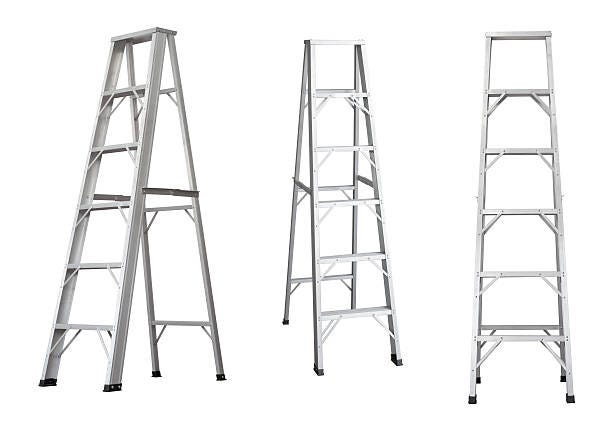Step Ladder 3 Points Of Contact Rule; Why You Should Follow The Rule

Step Ladder Hazards
There are many hazards associated with step ladders. The most important rule to remember is the 3 points of contact rule. This means that you should always have three points of contact with the ladder at all times. This will help you maintain your balance and avoid falling.
Here are some of the hazards associated with step ladders –
One hazard is when people forget about their surroundings. For example, if you are in a narrow hallway, there is a high risk of bumping into the walls or door frame. If there is anything on the floor, like cords or papers, it can easily be knocked over.
One more hazard is when people climb up from a ladder rung to a higher rung and do not get back down before stepping off onto solid ground. Falling from even one rung can cause serious injury.
Another most common hazards is forgetting to lock your ladder into place. If you set up a stepladder and climb up, but do not lock it in place before stepping off, it will swing back and fall.
Using a ladder improperly is one of the most common hazards. Stepladders are intended for standing straight up and down, not leaning over or to either side. If you need to lean, you should use a different type of ladder, such as an extension ladder.
One more hazard associated with step ladders is when people have them against a wall or up against another surface. This can cause you to lose your balance and fall.
READ: 10 Tips On The Safe Use Of Step A Ladder
Step Ladder 3 Points Of Contact Rule
The three points of contact rule states that, at any given time, you should have at least two hands and one foot or two feet and one hand on the ladder in order to be stable and safe while climbing.
Remember that it is important to always move your hands up the ladder when ascending and down the ladder when descending. It is also imperative to lean back slightly when ascending so as not to overbalance yourself.
The 3 Point Ladder Rule is different from other rules because we are talking about more than just a single point of contact at any given time. For instance, if you are going up a ladder, then you should use two hands and one foot on the ladder (or one hand and two feet). When going down a ladder, it is best to use both feet on the ladder with either both hands or just one hand for balance.
The ladder rule is best to remember because it not only gives you three points of contact, but it also includes a variation in your hand and foot position depending on whether you are going up or down. If you do not follow all three rules, then you will fall off of your ladder.
The ladder rule is important because it not only protects you from falling off of your ladder, but it also increases your safety when climbing. If you follow all three points of contact on a ladder, then you will be much safer than if you just climb with one or two hands and feet on a ladder.
Ladder Safety Tips
Here are general ladder safety tips to ensure safety when working on ladders –
When using a ladder, here are some important safety tips to remember.
1. First and foremost, make sure you keep your body in line with your work area; in other words, stay parallel to it so that you don’t have to lean too far to either side. Doing so increases your risk of falling off of or tripping over an extension ladder.
2. The second rule for ladder safety is the 3 points of contact rule. You want to be standing on two feet and one hand at all times while you’re on the ladder. A person should only be climbing up or down the ladder while holding onto the rails with two hands, never one hand. When ascending or descending the ladder, place three points of contact (two feet and one hand) on each step before moving up or down again.
3. Use the back of the ladder as much as possible, instead of its sides. The back will be narrower than the sides and provide more stability for your body weight.
4. Never stand higher than halfway up a ladder’s height if it can not support more than half your weight because this also reduces stability in case you slip or lose balance.
5. Ladder extensions are not always necessary if you take these safety precautions- just try using different steps on the ladder to bring yourself closer to where you need to go!
6. Remember, ladder safety starts from the ground level. Always use a ladder that has been inspected by a professional to make sure there are no defects or broken parts.
7. Place the ladder next to whatever it is you are trying to reach and extend it accordingly; make sure there isn’t anything below it that could cause harm if you fell from the ladder.
8. If your ladder does not seem stable enough after following these guidelines, do not attempt to use it until further inspection by a professional takes place.
9. When climbing or descending a ladder, make sure to hold tightly onto both rails. One hand is not enough!
10. When stepping off of the ladder, move both feet quickly to the ground and then let go of one rail before letting go of the other rail so that you maintain your balance.
11. Be careful about how high you climb on a ladder- follow step number four in this list and do not exceed 50% of your weight capacity per footstep.
